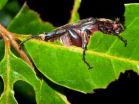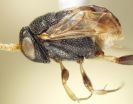(Press-News.org) Reaching globally-agreed targets for health risks such as smoking and alcohol can prevent more than 37 million deaths by 2025.
A new international study led by Imperial College London has estimated how achieving globally-agreed targets for six important health risks between 2010 and 2025 will reduce deaths caused by the big-four chronic diseases: cancers, diabetes, lung disease and cardiovascular disease (mainly heart disease and stroke).
Published in The Lancet the study finds that achieving the targets can prevent over 37 million deaths from these diseases by 2025. The large majority of the extra deaths will be in low-to-middle-income nations. Targets for reducing smoking and blood pressure will lead to the largest health benefits.
In 2011, the UN General Assembly agreed to reduce deaths from the big-four chronic diseases. The World Health Organisation (WHO) created targets for both premature deaths from these chronic diseases and their key risk factors like smoking, alcohol use, high blood pressure and blood glucose, obesity and salt consumption. The researchers analysed the effects of achieving these targets for risk factor on deaths from the four major chronic diseases.
The study shows that the big-four chronic diseases killed over 28 million people in 2010, a number that is projected to increase to 39 million in 2025 if no new action is taken.
If the six risk factor targets are achieved, the risk of dying prematurely from chronic diseases in 2025 will go down by 22 per cent for men and by 19 per cent for women compared to their 2010 levels. This corresponds to preventing more than 37 million deaths between 2010 and 2025, including 16 million deaths amongst those who are younger than 70 years and whose deaths are considered premature.
Senior author of the study, Professor Majid Ezzati from the MRC-PHE Centre for Environment at Imperial College London's School of Public Health said: "It is possible to achieve most of the desired reduction in deaths from chronic diseases by tackling a small number of preventable risk factors."
The current global targets include a 30 per cent reduction in smoking levels, a 10 per cent reduction in alcohol consumption and a 30 per cent reduction in salt in food. The research found that achievement of some targets had bigger impacts than others, with reductions in smoking and blood pressure producing the greatest benefits.
If a more ambitious target of halving the levels of smoking is achieved alongside the other targets, the risk of dying prematurely from the big-four would be reduced by nearly 25 per cent in men – the desired global target – and by 20 per cent in women. This corresponds to averting nearly 43 million deaths between 2010 and 2025.
Study lead author, Dr Vasilis Kontis from Imperial College London's School of Public Health said: "Our study demonstrates that the tobacco use target should be more ambitious. Reducing the prevalence of smoking by 50 per cent by 2025 is feasible based on proven policy measures, and should become a global target to avoid millions of premature deaths."
Professor Ezzati said: "Much larger impacts will be seen in low-to-middle-income countries where 31 million deaths will be averted. High income countries are already working towards many of these targets with a range of policy measures such as tobacco and alcohol taxes, public smoking bans, and guidelines to reduce the amount of salt in food, although we still need to find ways to curb obesity and diabetes.
"Our study shows the urgent need for a greater policy push and injection of resources into low-to-middle-income countries to replicate the success stories and to avoid escalating numbers of chronic disease deaths in the poorest countries," he added.
The study also showed that the risk factor targets had different impacts depending on the disease. The greatest impact was on cardiovascular disease and chronic lung disease, with more than a 25 per cent reduction in the risk of premature death from each of these conditions. Importantly, achieving the risk factor targets will also reverse the rising tide of mortality from diabetes.
INFORMATION:
The study was an international collaboration between researchers from Imperial College London, World Health Organisation, University of Toronto, and University of Auckland. It was funded by a Medical Research Council (MRC) strategic award to Professor Ezzati.
For more information please contact:
Franca Davenport
Research Media Officer
Imperial College London
Email: f.davenport@imperial.ac.uk
Tel: +44(0)20 7594 2198
Out of hours duty press officer: +44(0)7803 886 248
Notes to editors
Reference: V.Kontis et al. 'Contribution of six risk factors to achieving the 25×25 non-communicable disease mortality reduction target: a modelling study' The Lancet (2014) doi: dx.doi.org/10.1016/S0140-6736(14)60616-4.
1. About Imperial College London
Consistently rated amongst the world's best universities, Imperial College London is a science-based institution with a reputation for excellence in teaching and research that attracts 14,000 students and 6,000 staff of the highest international quality. Innovative research at the College explores the interface between science, medicine, engineering and business, delivering practical solutions that improve quality of life and the environment - underpinned by a dynamic enterprise culture.
Since its foundation in 1907, Imperial's contributions to society have included the discovery of penicillin, the development of holography and the foundations of fibre optics. This commitment to the application of research for the benefit of all continues today, with current focuses including interdisciplinary collaborations to improve global health, tackle climate change, develop sustainable sources of energy and address security challenges.
In 2007, Imperial College London and Imperial College Healthcare NHS Trust formed the UK's first Academic Health Science Centre. This unique partnership aims to improve the quality of life of patients and populations by taking new discoveries and translating them into new therapies as quickly as possible.
Website: http://www.imperial.ac.uk
2. The Medical Research Council has been at the forefront of scientific discovery to improve human health. Founded in 1913 to tackle tuberculosis, the MRC now invests taxpayers' money in some of the best medical research in the world across every area of health. Twenty-nine MRC-funded researchers have won Nobel prizes in a wide range of disciplines, and MRC scientists have been behind such diverse discoveries as vitamins, the structure of DNA and the link between smoking and cancer, as well as achievements such as pioneering the use of randomised controlled trials, the invention of MRI scanning, and the development of a group of antibodies used in the making of some of the most successful drugs ever developed. Today, MRC-funded scientists tackle some of the greatest health problems facing humanity in the 21st century, from the rising tide of chronic diseases associated with ageing to the threats posed by rapidly mutating micro-organisms. http://www.mrc.ac.uk
UN targets on health risk factors can prevent 37 million deaths by 2025
2014-05-03
ELSE PRESS RELEASES FROM THIS DATE:
The Lancet: Reducing just 6 risk factors could prevent 37 million deaths from chronic diseases over 15 years
2014-05-03
Reducing or curbing just six modifiable risk factors—tobacco use, harmful alcohol use, salt intake, high blood pressure and blood sugar, and obesity—to globally-agreed target levels could prevent more than 37 million premature deaths over 15 years, from the four main non-communicable diseases (NCDs; cardiovascular diseases, chronic respiratory disease, cancers, and diabetes) according to new research published in The Lancet.
Worryingly, the findings indicate that not reaching these targets would result in 38.8 million deaths in 2025 from the four main NCDs, 10.5 million ...
Leaf chewing links insect diversity in modern and ancient forests
2014-05-03
Observations of insects and their feeding marks on leaves in modern forests confirm indications from fossil leaf deposits that the diversity of chewing damage relates directly to diversity of the insect population that created it, according to an international team of researchers.
"The direct link between richness of leaf-chewing insects and their feeding damage across host plants in two tropical forests validates the underlying assumptions of many paleobiological studies that rely on damage-type richness as a means to infer changes in relative herbivore richness through ...
Salk scientists reveal circuitry of fundamental motor circuit
2014-05-02
LA JOLLA—Scientists at the Salk Institute have discovered the developmental source for a key type of neuron that allows animals to walk, a finding that could help pave the way for new therapies for spinal cord injuries or other motor impairments related to disease.
The spinal cord contains a network of neurons that are able to operate largely in an autonomous manner, thus allowing animals to carry out simple rhythmic walking movements with minimal attention—giving us the ability, for example, to walk while talking on the phone. These circuits control properties such as ...
Which came first, bi- or tricellular pollen? New research updates a classic debate
2014-05-02
With the bursting of spring, pollen is in the air. Most of the pollen that is likely tickling your nose and making your eyes water is being dispersed in a sexually immature state consisting of only two cells (a body cell and a reproductive cell) and is not yet fertile. While the majority of angiosperm species disperse their pollen in this early, bicellular, stage of sexual maturity, about 30% of flowering plants disperse their pollen in a more mature fertile stage, consisting of three cells (a body and two sperm cells). And then there are plants that do both.
So which ...
Researchers find unique fore wing folding among Sub-Saharan African Ensign wasps
2014-05-02
Researchers discovered several possibly threatened new species of ensign wasps from Sub-Saharan Africa -- the first known insects to exhibit transverse folding of the fore wing. The scientists made this discovery, in part, using a technique they developed that provides broadly accessible anatomy descriptions.
"Ensign wasps are predators of cockroach eggs, and the transverse folding exhibited by these species may enable them to protect their wings while developing inside the cramped environment of cockroach egg cases," said Andy Deans, associate professor of entomology, ...
Probing dopant distribution
2014-05-02
The icing on the cake for semiconductor nanocrystals that provide a non-damped optoelectronic effect may exist as a layer of tin that segregates near the surface.
One method of altering the electrical properties of a semiconductor is by introducing impurities called dopants. A team led by Delia Milliron, a chemist at Berkeley Lab's Molecular Foundry, a U.S Department of Energy (DOE) national nanoscience center, has demonstrated that equally important as the amount of dopant is how the dopant is distributed on the surface and throughout the material. This opens the door ...
Drinking poses greater risk for advanced liver disease in HIV/hep C patients
2014-05-02
PHILADELPHIA—Consumption of alcohol has long been associated with an increased risk of advanced liver fibrosis, but a new study published online in Clinical Infectious Diseases from researchers at Penn Medicine and other institutions shows that association is drastically heightened in people co-infected with both HIV and chronic hepatitis C virus (HCV) infection. Even light ("nonhazardous") drinking—which typically poses a relatively low risk for uninfected persons—was linked to an increased risk of liver fibrosis in the co-infected group.
Reasons for this are not fully ...
Space Station research shows that hardy little space travelers could colonize Mars
2014-05-02
In the movies, humans often fear invaders from Mars. These days, scientists are more concerned about invaders to Mars, in the form of micro-organisms from Earth. Three recent scientific papers examined the risks of interplanetary exchange of organisms using research from the International Space Station. All three, Survival of Rock-Colonizing Organisms After 1.5 Years in Outer Space, Resistance of Bacterial Endospores to Outer Space for Planetary Protection Purposes and Survival of Bacillus pumilus Spores for a Prolonged Period of Time in Real Space Conditions, have appeared ...
Story tips from the Department of Energy's Oak Ridge National Laboratory, May 2014
2014-05-02
To arrange for an interview with a researcher, please contact the Communications staff member identified at the end of each tip. For more information on ORNL and its research and development activities, please refer to one of our media contacts. If you have a general media-related question or comment, you can send it to news@ornl.gov.
DIESELS – Reducing soot . . .
Nine U.S. diesel engine manufacturers and Oak Ridge National Laboratory are using their collective horsepower to tackle the perennial industry-wide problem of efficiency-robbing soot in engines. Over time, ...
Vanderbilt study explores genetics behind Alzheimer's resiliency
2014-05-02
Autopsies have revealed that some individuals develop the cellular changes indicative of Alzheimer's disease without ever showing clinical symptoms in their lifetime.
Vanderbilt University Medical Center memory researchers have discovered a potential genetic variant in these asymptomatic individuals that may make brains more resilient against Alzheimer's.
"Most Alzheimer's research is searching for genes that predict the disease, but we're taking a different approach. We're looking for genes that predict who among those with Alzheimer's pathology will actually show ...





